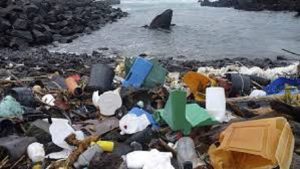Gender bending in marine life is not uncommon. In fact, it is considered a pretty natural way to ensure the survival of the species.
Durban’s uShaka Sea World is home to several marine species where females change sex into males to accommodate for a change in their environment or social structure.
The parrot fish in the tanks tell a story simply from looking at them.
She or rather he, is largely blue with hints of salmon pink.
A sign that she is transitioning to becoming a ‘he’!
In fact, the joke is that it’s a species’ way of saying, “anything a man can do, females can do better!”
The scientific term “protogynous hermaphroditism” means female first and it’s a complete transformation from internal ovaries being replaced by testes, a shift in colour and body shape.
Conservation strategist at the South African Association for Marine Biological Research, Doctor Judy Mann says sex change happens for natural, social and environmental circumstances.
But Mann says over-fishing is also skewing the rate at which this is happening.
“If we look at a marine protected area for example the isiMangaliso Wetland Park, there we see that there is one male for every three or four females. If we go down the south coast where there’s a lot of fishing pressure, we see one male for maybe 90 females.
Some of this is natural because the smaller fish are further south but some of it is because fishing pressure has removed the big males and there are not enough females changing to become these males. So, we do see a skewing of the sex ratio because of fishing pressure.”
There are also sea breams, wrasses and sea goldies that change sex.
Mann says the change extends to their personalities too.
“So in the sea goldie, the females are normally kind of an orange colour and when they get to be male they change colour, they get bigger, and they even get a much more dominant, aggressive attitude and we’ve seen that happening in our exhibits. So, if a male is removed, the next most dominant female will, over a period of weeks and sometimes even less time, change sex. She’ll get bigger, stronger; she changes colour and she becomes a male to look after the females, who will now be her harem.”
So, while female fish are swimming against the current and showing the boys how it’s done, for other marine life it’s a case of mistaken identity.
Aquarist at the South African Association for Marine Biological Research, Sarah Collocott, works with loggerhead turtles caring for their health and well-being.
Explaining why there was more to Turtle Davie Jones than meets the eye, she says, “She was a real hit with all the aquarists because she’s so clever and communicates perfectly and comes to target and is just such a lovely turtle. But we have recently discovered why this is. And that’s because he is actually a she. So, we’ve renamed her Delia Jones. She is going to be with us for a little while and then hopefully, we’ll release her into the wild.”






